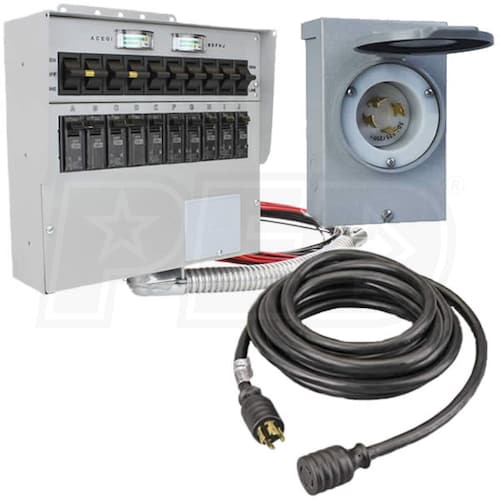We arrived home (sticks and bricks) from our winter RV travels just in time for a winter storm here in Colorado Springs. This particular storm brought snow and real high winds. This combination led to widespread power outages around the area.
Our power went out about 1:30 am, was out for several hours, came back on for a short time, then off, then on etc. This went on for a total of 12 hours, most of which, we were without power.
When the power goes out, one always wonders how long it will last. When it happens in the winter, it’s especially frustrating as one is typically without heat. We don’t have a backup generator for our home.
This got me to thinking about how I could use the RV generator (Cummins-Onan 5500 watts LP) to power critical circuits in the home.
PROs
- Use of a generator that I already have
- Simple to operate, connect etc.
- Less expensive than a whole home generator for a home that is not my forever home
CONs
- Can't power the entire home
- Small fuel tanks and frequent changes during long runtimes
My goals
I'm estimating about $750
Labor Cost
Unsure about the cost of the Electrician for wiring in the transfer switch but I’m estimating about 3 hours labor. I’ll wire in the PIB on the side of the house and the NEMA 14-50R in the RV
Upon commercial grid power loss, in my mind, this is the "use process" I envision
- Add a commercial power grid status light (wired from the grid side of the transfer switch) inside the home that is switchable. In this manner, I'll know when commercial power comes back on, can monitor it and decide when I want to switch back to it
Questions
Our power went out about 1:30 am, was out for several hours, came back on for a short time, then off, then on etc. This went on for a total of 12 hours, most of which, we were without power.
When the power goes out, one always wonders how long it will last. When it happens in the winter, it’s especially frustrating as one is typically without heat. We don’t have a backup generator for our home.
This got me to thinking about how I could use the RV generator (Cummins-Onan 5500 watts LP) to power critical circuits in the home.
PROs
- Use of a generator that I already have
- Simple to operate, connect etc.
- Less expensive than a whole home generator for a home that is not my forever home
CONs
- Can't power the entire home
- Small fuel tanks and frequent changes during long runtimes
My goals
- To NOT buy another generator
- To NOT power the entire home (only loads critical to me)
- To install a SIMPLE system
- To install a SAFE system (safe for commercial grid workers and safe for the user)
- Install an Eaton WD1212 NEMA 14-50R (50 amp RV receptacle) inside the front RV storage compartment, outside of the gen cabinet, on the back wall. This will get wired in parallel with the 2 output legs of the generator from the junction box in the same compartment
- Have an electrician install a Generac 6335 50-Amp Manual Transfer Switch (or equivalent) on the outside of the house next to the power meter
- Have an electrician install a Generac 6344 50-Amp Power Inlet Box (or equivalent) on the outside of the house next to the manual transfer switch
- Connect the RV generator to the Power Inlet Box (PIB) on the house using a Generac 6389 25-Foot 50-Amp Generator Cord (or equivalent)
I'm estimating about $750
Labor Cost
Unsure about the cost of the Electrician for wiring in the transfer switch but I’m estimating about 3 hours labor. I’ll wire in the PIB on the side of the house and the NEMA 14-50R in the RV
Upon commercial grid power loss, in my mind, this is the "use process" I envision
- Switch off all branch circuit breakers in my home mains panel except the few I deem critical-to-me, that I wish to power via generator (eg: Furnace, Refrigerator, Microwave, Internet gear and some lighting)
- Connect cord to generator and PIB
- Start generator
- Switch Manual Transfer Switch to generator
- Add a commercial power grid status light (wired from the grid side of the transfer switch) inside the home that is switchable. In this manner, I'll know when commercial power comes back on, can monitor it and decide when I want to switch back to it
Questions
- Has anyone done this?
- Are there any fundamental flaws in my logic?
- Keeping my goals (above) in mind, what would you do differently?

